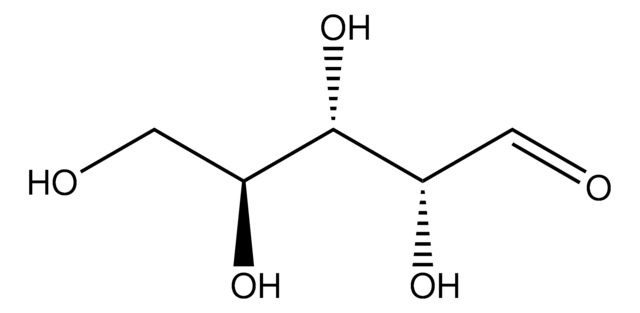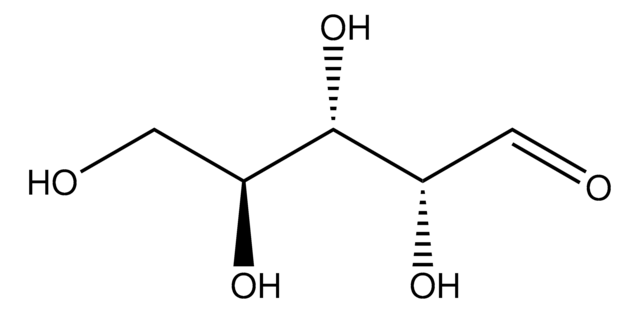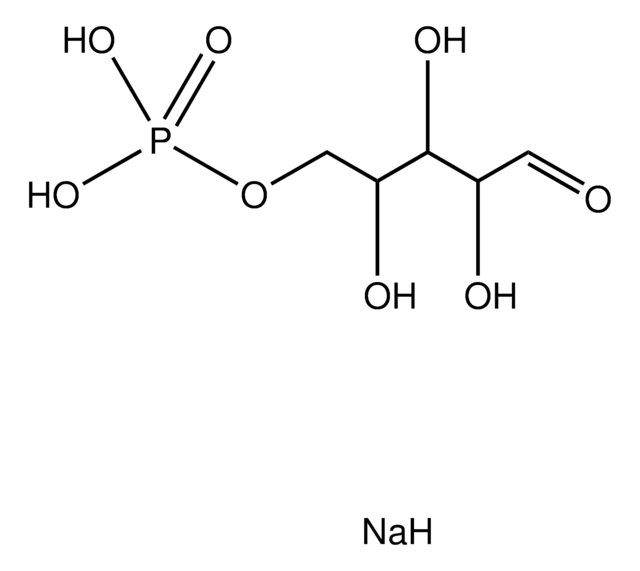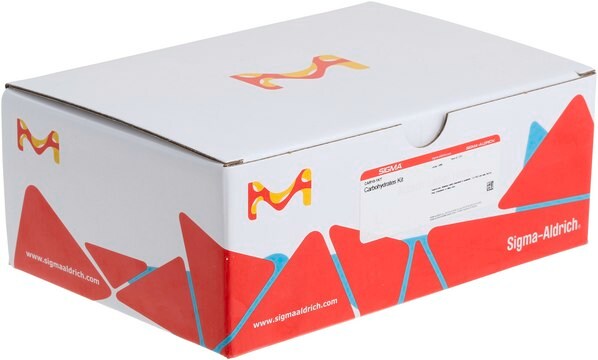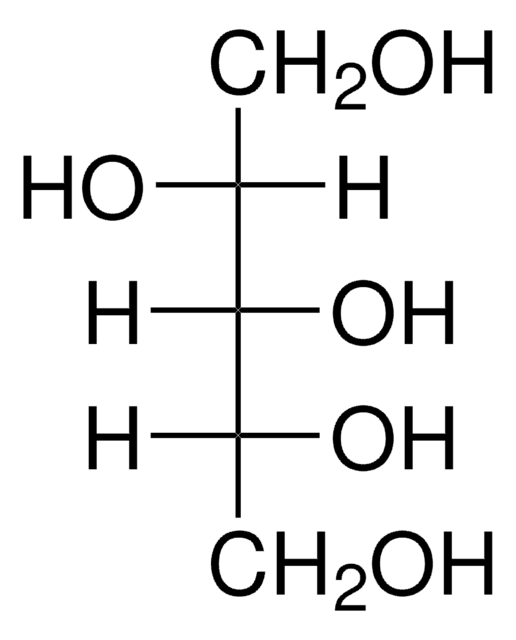A3131
D-(−)-Arabinose
≥98% (GC)
Synonym(s):
Aldehydo-D-arabinose
About This Item
Recommended Products
biological source
synthetic (organic)
Quality Level
Assay
≥98% (GC)
form
powder
optical activity
[α]20/D -105 to -103 °, c = 4% (w/v) in water
technique(s)
gas chromatography (GC): suitable
color
white to off-white
mp
162-164 °C (lit.)
solubility
water: 50 mg/mL, clear, colorless to faintly yellow
storage temp.
room temp
SMILES string
O[C@@H]1COC(O)[C@@H](O)[C@@H]1O
InChI
1S/C5H10O5/c6-2-1-10-5(9)4(8)3(2)7/h2-9H,1H2/t2-,3-,4+,5?/m1/s1
InChI key
SRBFZHDQGSBBOR-ZRMNMSDTSA-N
Looking for similar products? Visit Product Comparison Guide
Application
Biochem/physiol Actions
Other Notes
Storage Class Code
11 - Combustible Solids
WGK
WGK 3
Flash Point(F)
Not applicable
Flash Point(C)
Not applicable
Choose from one of the most recent versions:
Already Own This Product?
Find documentation for the products that you have recently purchased in the Document Library.
Customers Also Viewed
Our team of scientists has experience in all areas of research including Life Science, Material Science, Chemical Synthesis, Chromatography, Analytical and many others.
Contact Technical Service